|
Colorado
A Classic Western Quarrel: A History of the Road Controversy at Colorado National Monument |

|
CHAPTER FOUR:
Construction of Rim Rock Drive: 1931-1950 (continued)
The Road Project and the Community
Community support of the road project was challenged on December 12, 1933, when the so-called "half-tunnel accident" took place. On that day, 20 Glade Park men recently hired by the CWA worked to cut part of the road into a cliff face in the shape of a half-tunnel. They had been blasting small sections of rock and then clearing by hand the debris from under the newly formed overhang of rock. Newspaper accounts stated that after the final shots were fired, supervisors of the project made the men wait 20 minutes before they went in to clear rocks. The men were working in what appeared to be a safe area when a powder charge fired by another work group on the opposite side of the canyon supposedly dislodged the cliff. [339] Three men actually jumped over the 300-foot cliff to escape, six men were instantly crushed, and one man was partially buried, living only through that night. The victims ranged in age from 19 to 60 years. [340]
The tragedy immediately raised a host of questions regarding the safety of workers and the competency of supervisors. The morning after the incident, the coroner arranged an inquest in which witnesses to the event testified. After all the testimony was heard, officials concluded that what had occurred had been an unavoidable accident [341] Yet, only three days after the accident, about thirty workers from the road project circulated a petition for a grand jury investigation and informed the District Attorney, William F. Haywood, that proper precautions for worker safety had not been taken prior to the accident or at any other time during the road construction. The workers also submitted statements to the Daily Sentinel that openly stated that not enough time had elapsed between the final blast and when the men continued work, and that the entire cliff face had not been investigated properly before the accident. [342] Finally on December 18, the same delegation of workers insisted on holding a public hearing at which the Chamber of Commerce, T.W. Secrest, and William Haywood were present. Most of the men agreed that the supervisors and foremen were blameless as far as the accident was concerned, although they unanimously stated that the chief powder man (explosives expert), Mr. McEwan, had not always been careful in his work. [343]
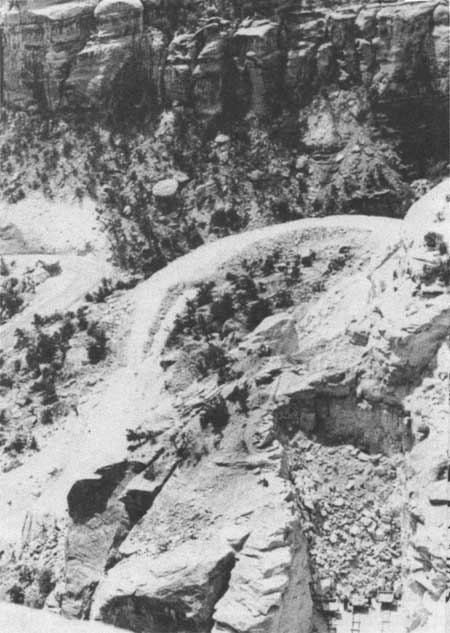
|
| Figure 4.4. View from cliff above the south portal of tunnel #3 (bottom right) and east side road and switchbacks. Colorado National Monument Museum and Archive Collection. |
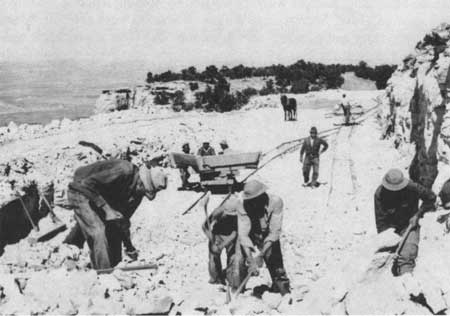
|
| Figure 4.5. Men working at Cold Shivers Point on east Rim Rock Drive. Most of the work on the road was done by hand. Colorado National Monument Museum and Archive Collection. |
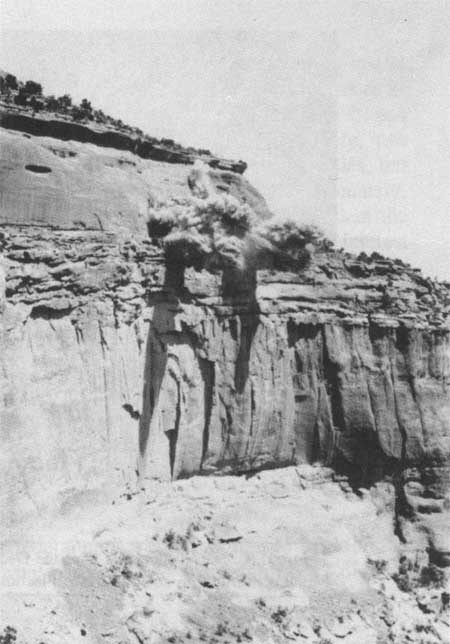
|
| Figure 4.6. Blasting at Half-Tunnel site (not actual accident blast). Colorado National Monument Museum and Archive Collection. |
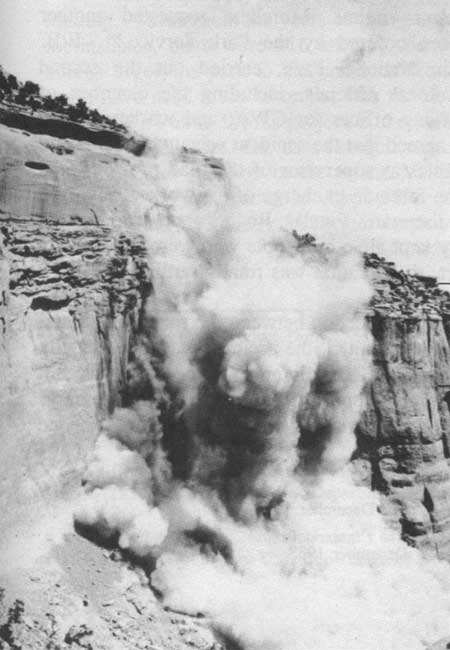
|
| Figure 4.7. Blasting at Half-Tunnel site (not actual accident blast). Colorado National Monument and Archive Collection. |
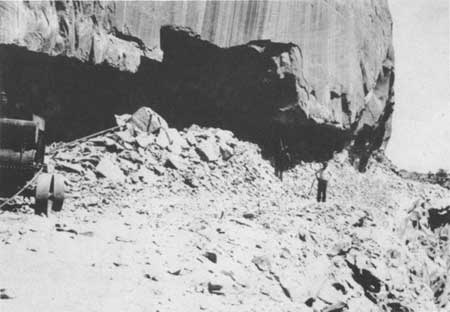
|
| Figure 4.8. Half-Tunnel site after the December 12, 1933 accident. Colorado National Monument Museum and Archive Collection. |
| <<< Previous | <<< Contents >>> | Next >>> |
colm/adhi/adhi1-4c.htm
Last Updated: 09-Feb-2005